Piercy & Company crafts co-working space in Victorian warehouse for Fora
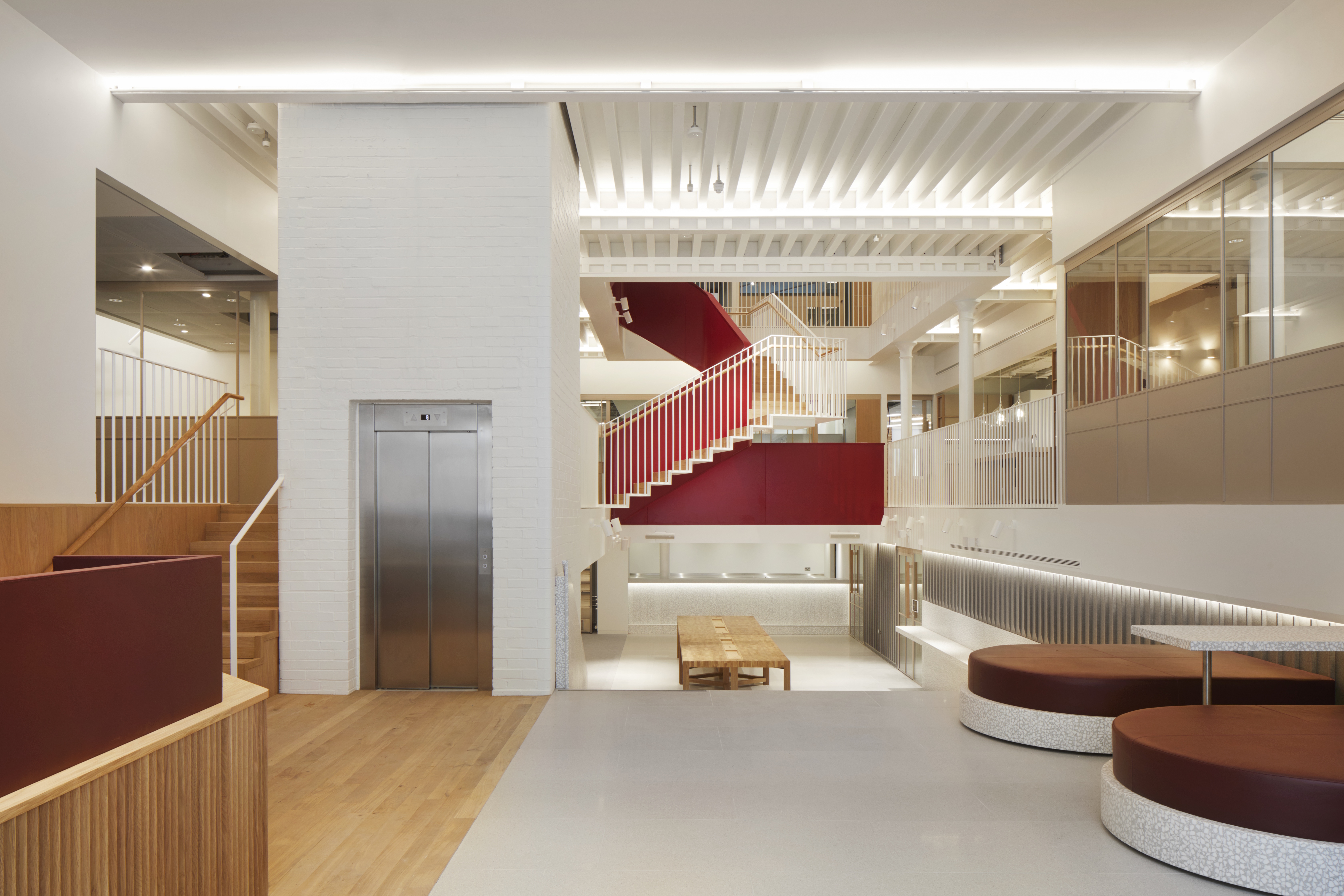
Fora has opened a ninth co-working space in London, in a Victorian warehouse just off Brick Lane that has been refurbished and redesigned by Piercy & Company. The British architecture and design studio brings in its signature, contemporary approach to craft, as seen at projects such as this Savile Row HQ or their recently completed west London church.
Located in the Fournier Street Conservation Area, a treasured part of town, where history, industry, immigration and culture are scrawled artfully across the architecture, the original warehouse building dating back to the mid 19th century was an important asset to the new design. The architects describe it as a ‘soft, textured shell into which new elements could be placed’. Perimeter brick walls – previously white, and now painted dark grey on the façade – were maintained, as was original timber and cast iron elements inside the building.
The original building also guided the design of the new two-storey extension, which floats on top of the warehouse, stepped back to create terraces and clad in lots of glazing to bring natural daylight into the core of the building (lighting was a key issue in the existing structure). This meant the character of the warehouse was retained, whilst also creating 23,000 sq ft of co-working space.
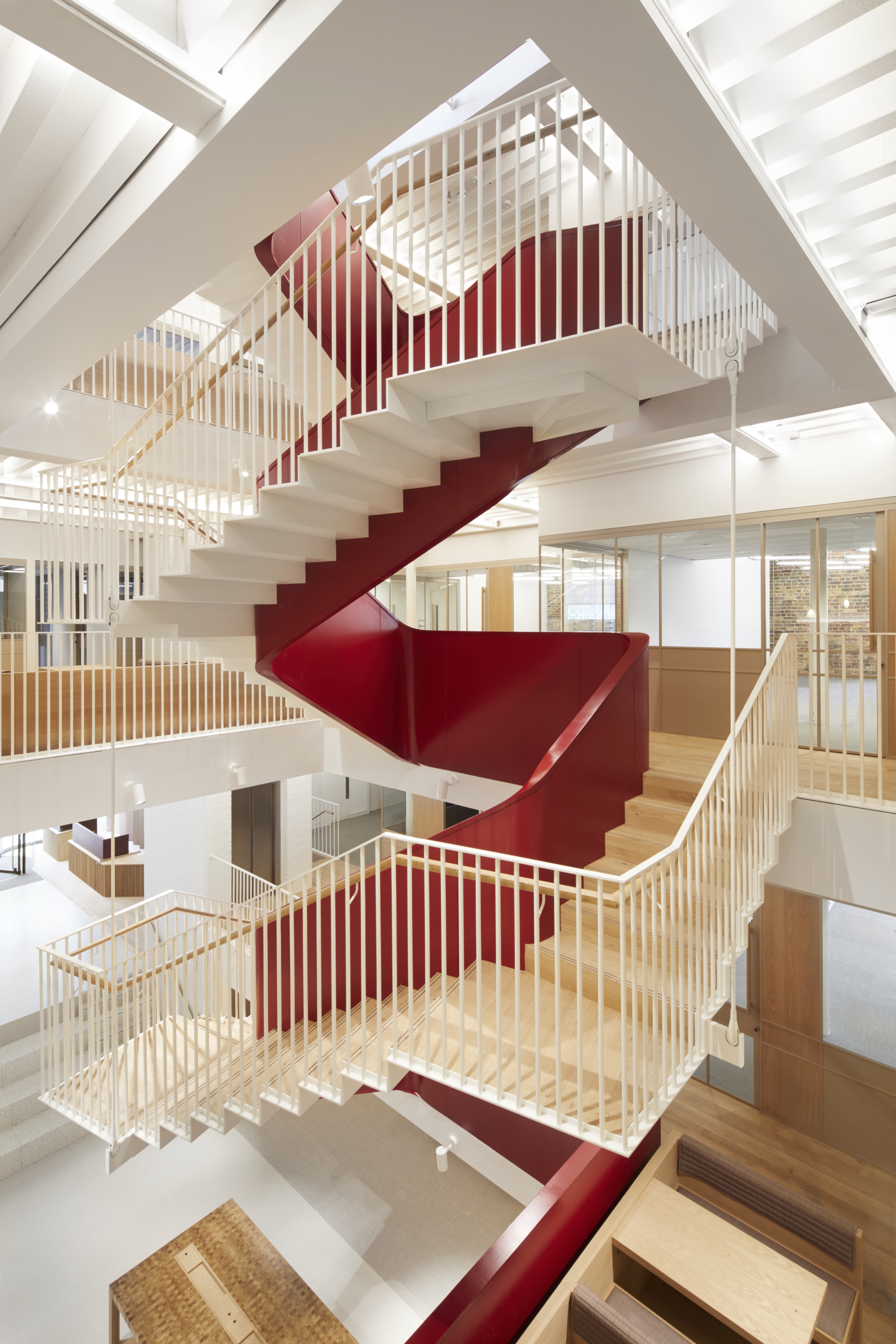
With plenty of light-filled areas to play with, the architects cast a suspended staircase into the heart of the design. Somewhat of a statement staircase, the red metal construction unfolds like a piece of origami through the building, opening up sightlines and connecting people across the space.
In an over-saturated co-working space market, Fora’s unique offering is its expertise in hospitality – the business was co-founded by Katrina Larkin, co-founder of the Big Chill festival, and Enrico Sanna, hospitality entrepreneur. Their belief is that comfortable workspaces aid productivity and focus, and each of the spaces – there’s Foras in Clerkenwell, Borough, Reading, Fitzrovia and Soho too – aim to bring a member’s club style vibe.
RELATED STORY

Piercy & Company interpreted this ethos at the Brick Lane location through the ‘hotel-lobby type of arrival experience’ and the informal shared spaces, such as the residents' lounge and kitchens, which are ‘detailed in rich, enduring materials and flow seamlessly without doors or barriers’, explain the architects.
Instead of having a flexible space with floating elements, the architects wanted to bring a sense of permanence to this workspace. The team designed many bespoke areas, such as the stepped terrazzo event space in the lobby or the ring of focussed desks surrounding the core atrium that bring a timeless quality to the building and its use. They intended to create a sense of belonging and a ‘solid, grounded feel, providing a sense of privacy and focus.’
To make this happen, Piercy & Company collaborated with joinery and terracotta specialists to weave a handcrafted aesthetic throughout the space. ‘Realm Joinery helped us to create a family of materials and details across the suite of furniture elements,’ say the architects. Darwen Terracotta collaborated on the bespoke terracotta Belfast sinks in the wash rooms and in-built storage for hand towels and bins. This carefully orchestrated sense of crafted detail can be seen elsewhere in the up-lit floorplates and seamless timber plank flooring, artwork-filled picture shelves, upholstered phone booths and softly lit library spaces.
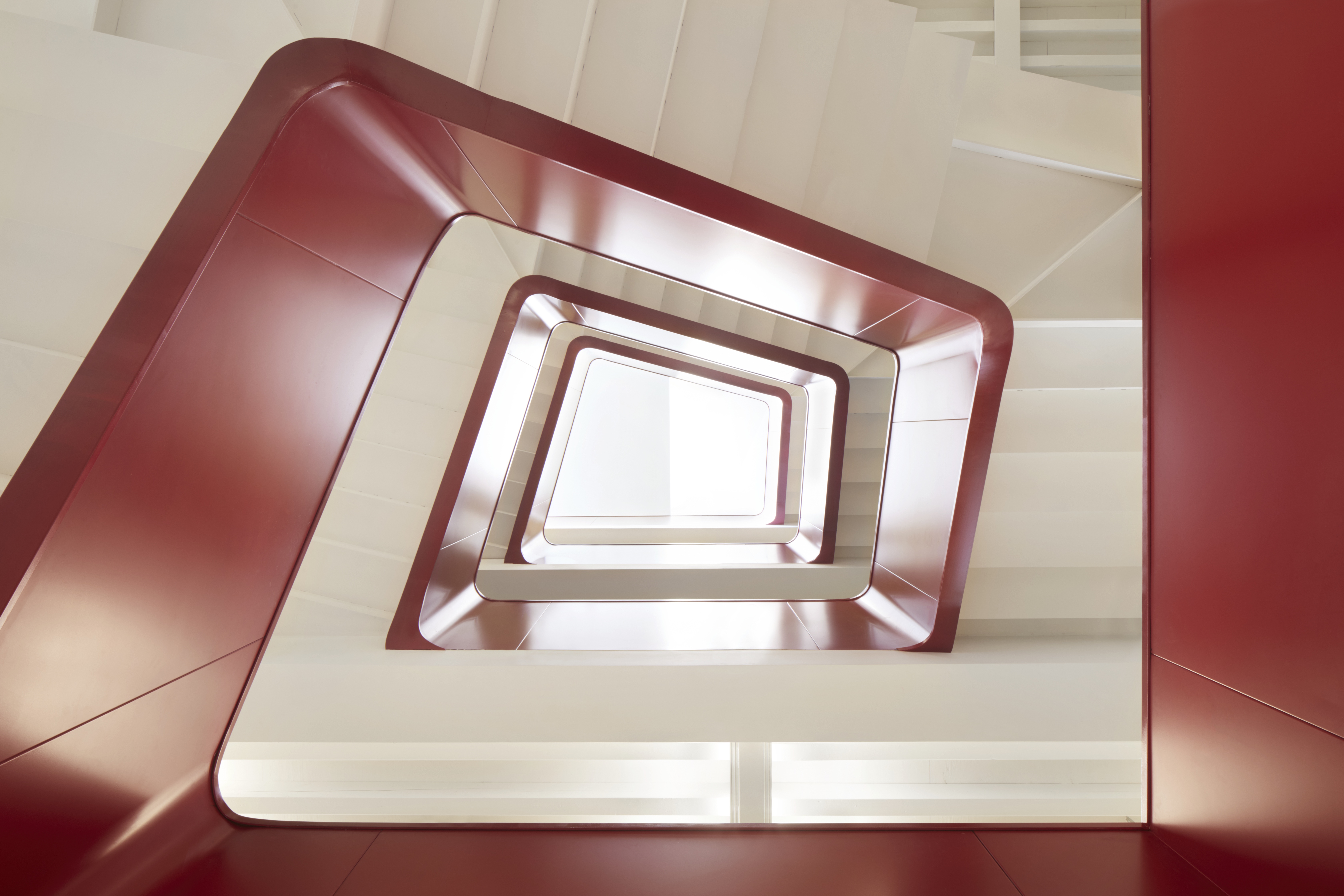
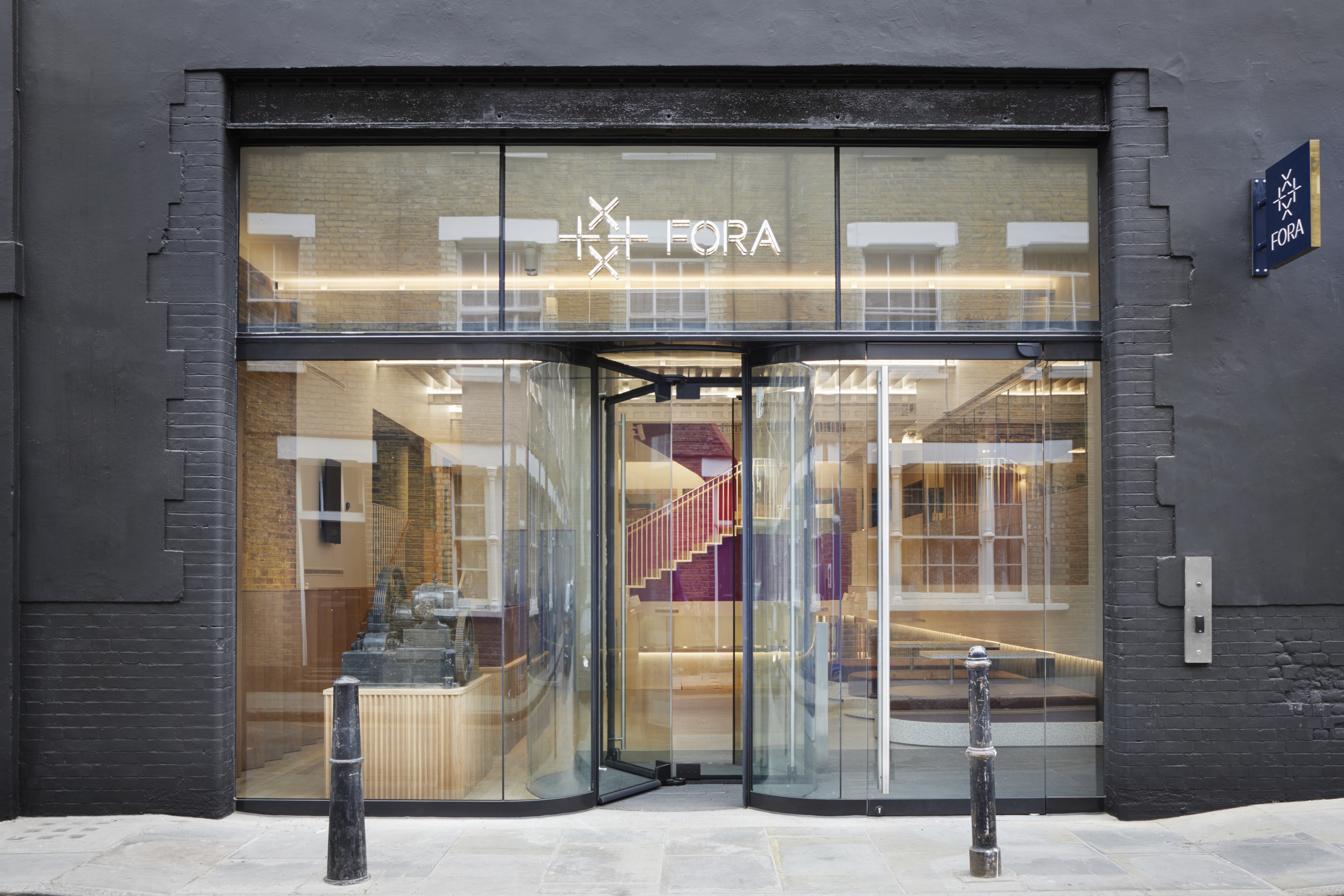


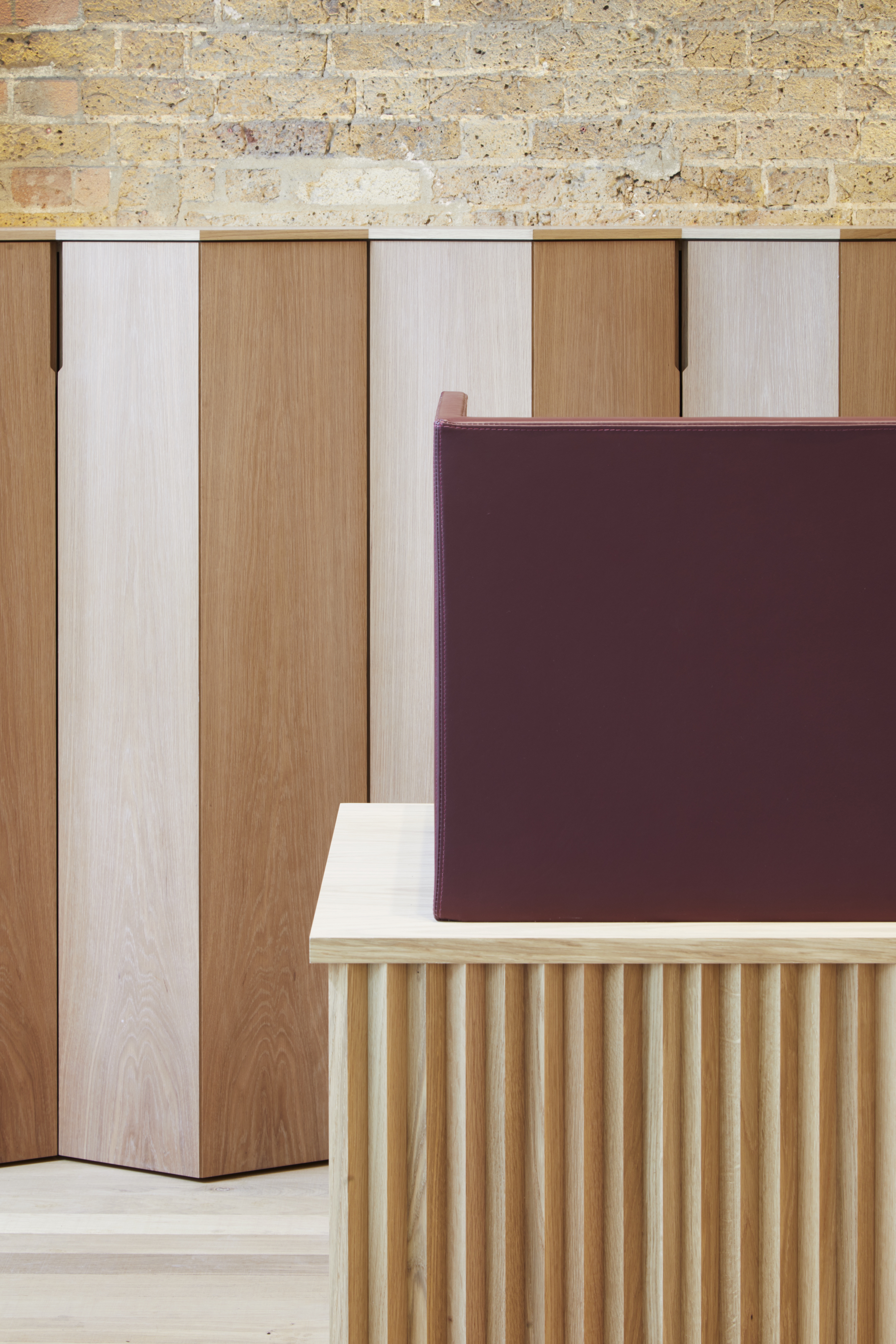
INFORMATION
Receive our daily digest of inspiration, escapism and design stories from around the world direct to your inbox.
Harriet Thorpe is a writer, journalist and editor covering architecture, design and culture, with particular interest in sustainability, 20th-century architecture and community. After studying History of Art at the School of Oriental and African Studies (SOAS) and Journalism at City University in London, she developed her interest in architecture working at Wallpaper* magazine and today contributes to Wallpaper*, The World of Interiors and Icon magazine, amongst other titles. She is author of The Sustainable City (2022, Hoxton Mini Press), a book about sustainable architecture in London, and the Modern Cambridge Map (2023, Blue Crow Media), a map of 20th-century architecture in Cambridge, the city where she grew up.
-
 The Bombardier Global 8000 flies faster and higher to make the most of your time in the air
The Bombardier Global 8000 flies faster and higher to make the most of your time in the airA wellness machine with wings: Bombardier’s new Global 8000 isn’t quite a spa in the sky, but the Canadian manufacturer reckons its flagship business jet will give your health a boost
-
 A former fisherman’s cottage in Brittany is transformed by a new timber extension
A former fisherman’s cottage in Brittany is transformed by a new timber extensionParis-based architects A-platz have woven new elements into the stone fabric of this traditional Breton cottage
-
 New York's members-only boom shows no sign of stopping – and it's about to get even more niche
New York's members-only boom shows no sign of stopping – and it's about to get even more nicheFrom bathing clubs to listening bars, gatekeeping is back in a big way. Here's what's driving the wave of exclusivity
-
 Arbour House is a north London home that lies low but punches high
Arbour House is a north London home that lies low but punches highArbour House by Andrei Saltykov is a low-lying Crouch End home with a striking roof structure that sets it apart
-
 A former agricultural building is transformed into a minimal rural home by Bindloss Dawes
A former agricultural building is transformed into a minimal rural home by Bindloss DawesZero-carbon design meets adaptive re-use in the Tractor Shed, a stripped-back house in a country village by Somerset architects Bindloss Dawes
-
 RIBA House of the Year 2025 is a ‘rare mixture of sensitivity and boldness’
RIBA House of the Year 2025 is a ‘rare mixture of sensitivity and boldness’Topping the list of seven shortlisted homes, Izat Arundell’s Hebridean self-build – named Caochan na Creige – is announced as the RIBA House of the Year 2025
-
 In addition to brutalist buildings, Alison Smithson designed some of the most creative Christmas cards we've seen
In addition to brutalist buildings, Alison Smithson designed some of the most creative Christmas cards we've seenThe architect’s collection of season’s greetings is on show at the Roca London Gallery, just in time for the holidays
-
 In South Wales, a remote coastal farmhouse flaunts its modern revamp, primed for hosting
In South Wales, a remote coastal farmhouse flaunts its modern revamp, primed for hostingA farmhouse perched on the Gower Peninsula, Delfyd Farm reveals its ground-floor refresh by architecture studio Rural Office, which created a cosy home with breathtaking views
-
 A revived public space in Aberdeen is named Scotland’s building of the year
A revived public space in Aberdeen is named Scotland’s building of the yearAberdeen's Union Terrace Gardens by Stallan-Brand Architecture + Design and LDA Design wins the 2025 Andrew Doolan Best Building in Scotland Award
-
 The Architecture Edit: Wallpaper’s houses of the month
The Architecture Edit: Wallpaper’s houses of the monthFrom wineries-turned-music studios to fire-resistant holiday homes, these are the properties that have most impressed the Wallpaper* editors this month
-
 A refreshed 1950s apartment in East London allows for moments of discovery
A refreshed 1950s apartment in East London allows for moments of discoveryWith this 1950s apartment redesign, London-based architects Studio Naama wanted to create a residence which reflects the fun and individual nature of the clients